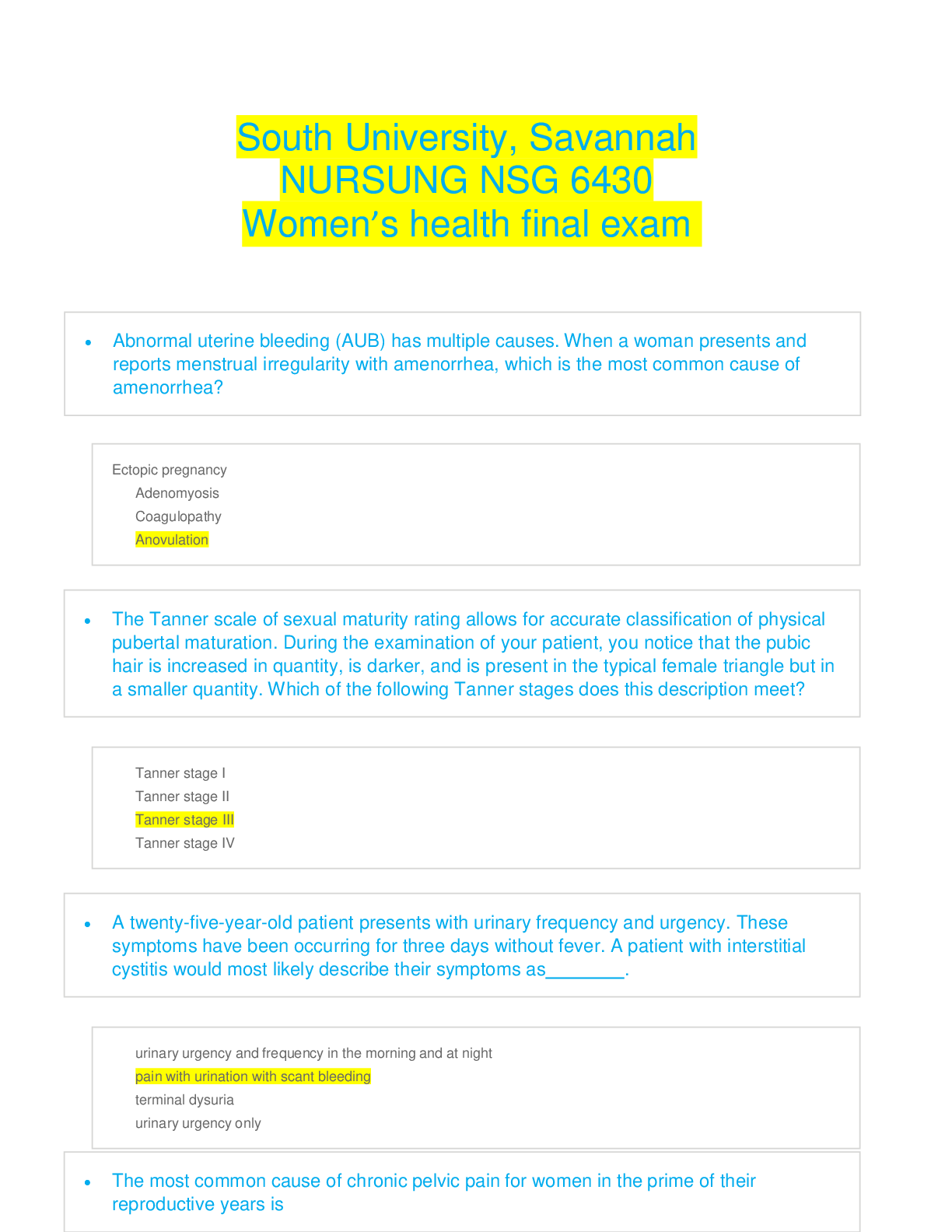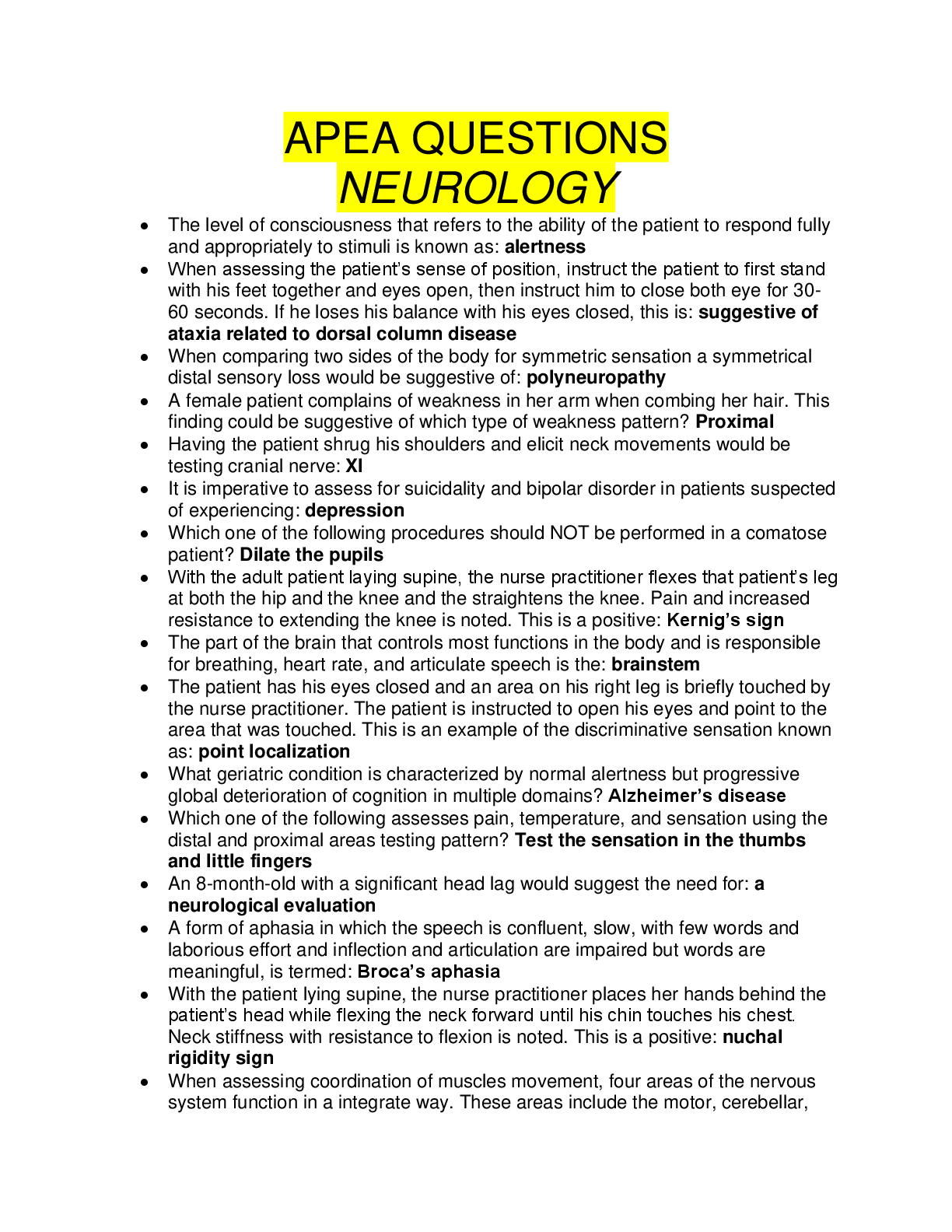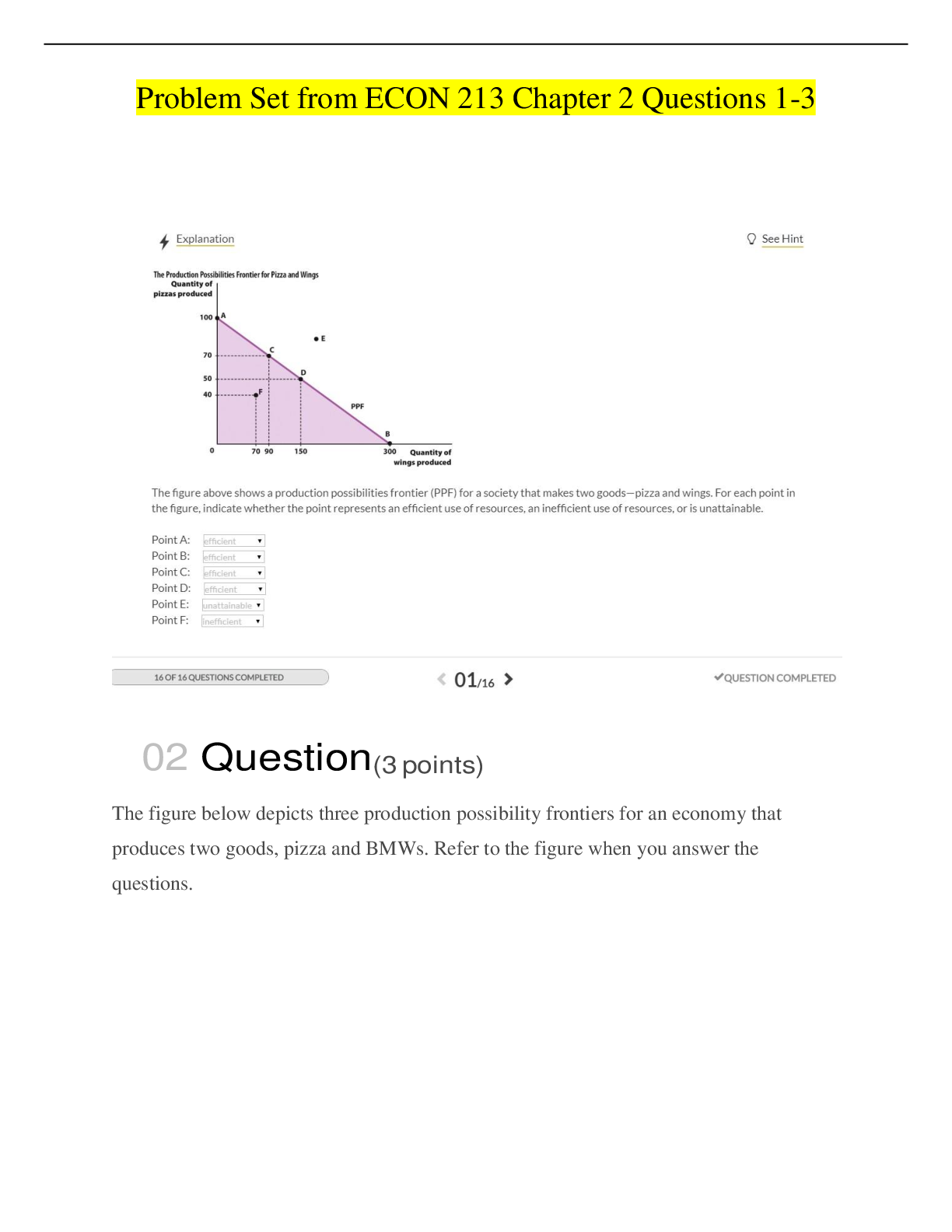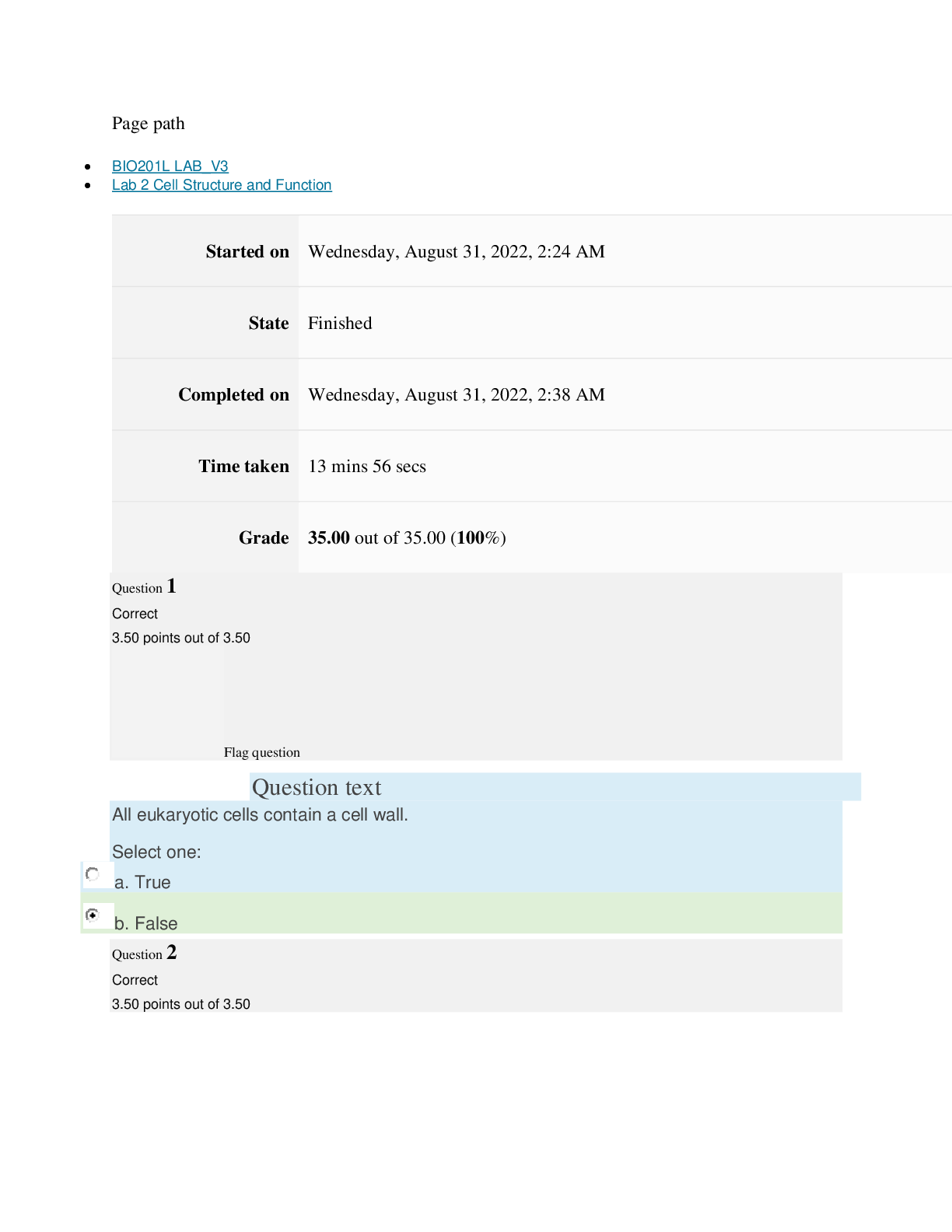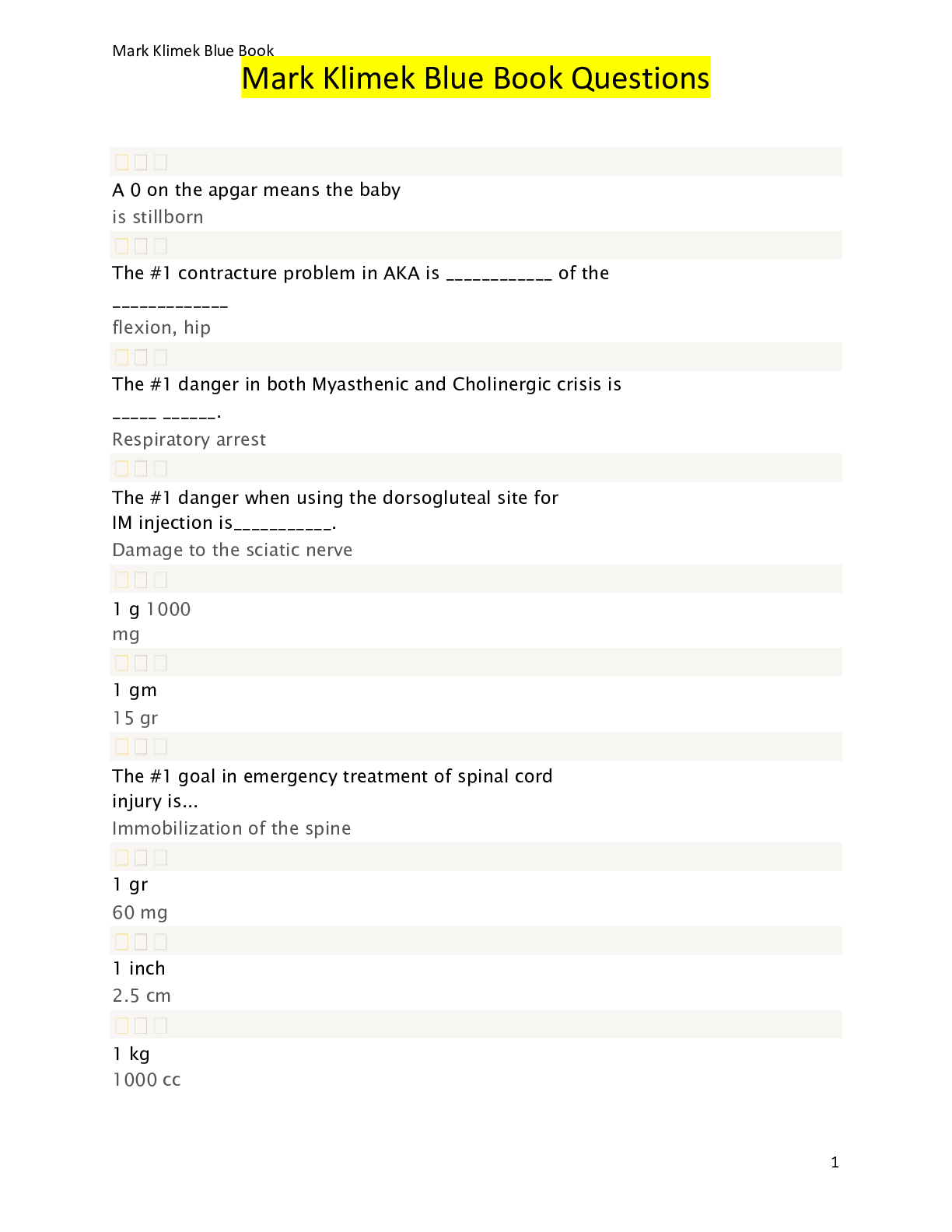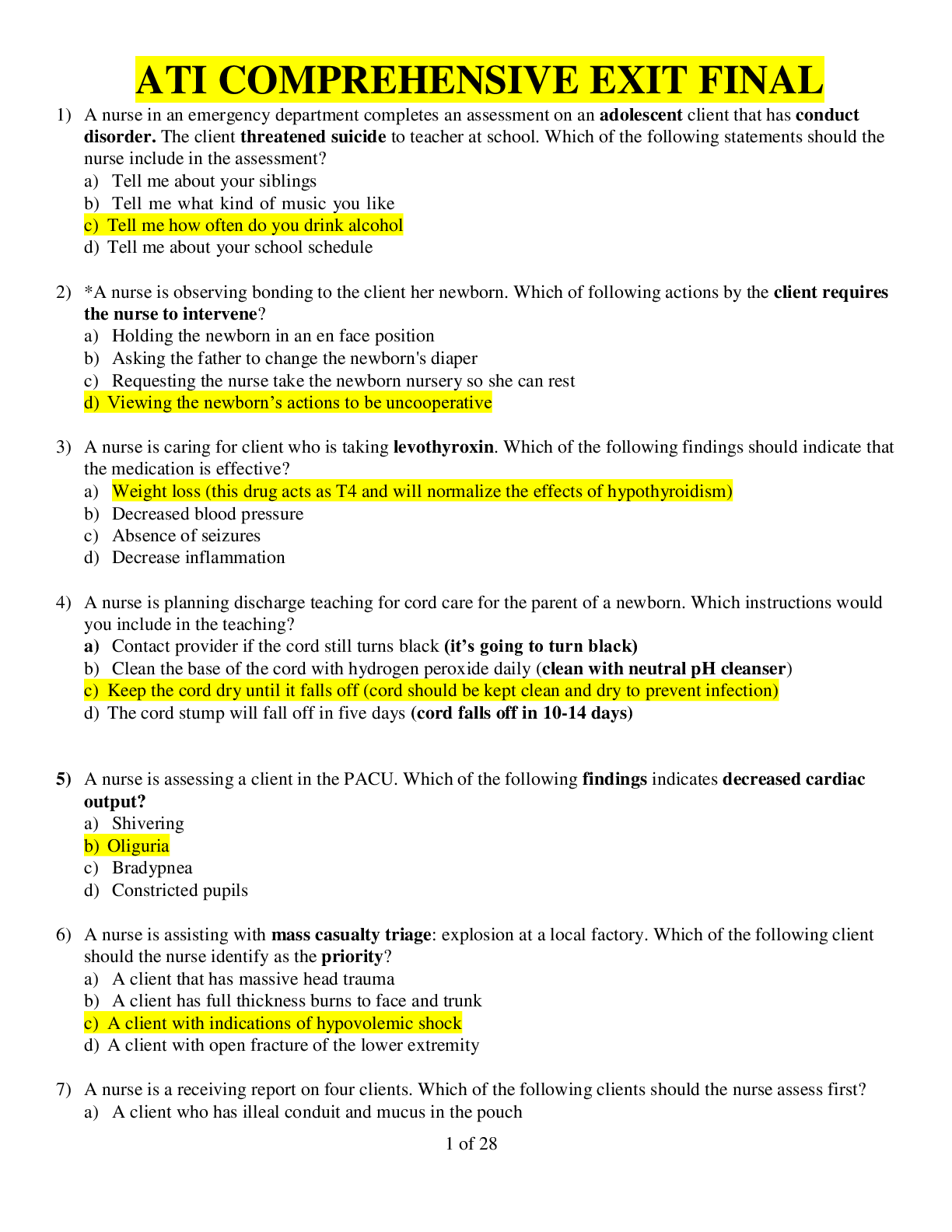*NURSING > QUESTIONS & ANSWERS > NCLEX-RN: Health Promotion & Maintenance Practice Questions (All)
NCLEX-RN: Health Promotion & Maintenance Practice Questions
Document Content and Description Below
NCLEX-RN: Health Promotion & Maintenance Practice Questions 1. You are caring for an infant who is just about 12 months old. Which assessment data is normal for the infant a... t this age? A. The infant had doubled their birth weight at twelve months. B. The infant had tripled their birth weight at twelve months. C. The mother reports that the infant is drinking 60 mLs per kilogram of its body weight. D. TheSHARESinfant had grown ¼ inch since last month. 2. You are the nursing supervisor in a long term care facility. One of the major considerations that you apply into your practice is strict infection control prevention measures because you are knowledgeable about the fact that the normal aging process is associated with the deterioration of the body’s normal defenses. Which theory of aging supports your belief that strict infection control prevention measures are necessary? A. The Programmed Longevity Theory B. The Immunological Theory of Aging C. The Endocrine Theory D. The Rate of Living Theory 3. You are caring for a group of elderly clients, many of whom are a ected with multiple chronic disorders and are also, at times, a ected with some acute disorders that require medical and nursing attention. As you are caring for these clients some will need a new medication regimen for an acute disorder. You should consider that fact that the elderly population is at risk for more side e ects, adverse drug reactions, and toxicity and over dosages of medications because the elderly have a (n): A. Increased creatinine clearance. B. Impaired immune system. C. Decreased hepatic metabolism. D. Increased bodily fat. What is the expected date of delivery for your pregnant client when her last menstrual period was on 10/20/2016? A. 7/7/2017 B. 8/7/2017 C. 6/7/2017 D. 8/1/2017 5. As you are assessing the fetus during labor you are determining and the fetal lie, presentation, attitude, station and position. Your client asks you what all these assessments are. Among other things, how should you respond to the mother? A. You should explain that fetal lie is where the fetus’ presenting part is within the birth canal during labor, among other information about the other assessments. B. You should explain that fetal presentation is the relationship of the fetus’s spine to the mother’s spine, among other information about the other assessments. C. You should explain that fetal attitude is the relationship of the fetus’ presenting part to the anterior, posterior, right or left side of the mother’s pelvis, among other information about the other assessments. D. You should explain that fetal station is the level of the fetus’ presenting part in relationship to the mother’s ischial spines, among other information about the other assessments. 6. You are working in a community pediatric health clinic. Which developmental task should you apply into your practice? A. You should apply the principles of initiative when caring for preschool children. B. You should apply the principles of sensorimotor thought when caring for preschool children. C. You should apply the principles of intimacy when caring for the adolescent. D. You should apply the principles of concrete operations when caring for the adolescent. 7. You are working in a community pediatric health clinic. Which expected life transition should you apply into your practice for these pediatric clients as you are caring for pediatric clients of all ages? A. Pregnancy B. Puberty C. Childhood immunizations D. Separation anxiety 8. Registered nurses care for clients in many settings and environments. These clients can be individual clients, couples, families, populations and communities. You have decided to use the Dimensions Model of Health model to assess, monitor and evaluate the health status of the community. Which of these dimensions is NOT an element of this Dimensions Model of Health model? A. The Biophysical Dimension B. The Psychological and Emotional Dimension C. The Spiritual Dimension D. The Health Systems Dimension 9. You are the registered nurse in a multi ethnic community health department clinic. In this role you are asked to identify clients who have genetic risk factors related to ethnicity in order to screen them for some commonly occurring diseases and disorders. You would identify a client who is of: A. Mediterranean ethnicity for cystic Pbrosis. B. African American ethnicity for Tay Sachs disease. C. British Isles ethnicity for psychiatric mental health disorders. D. Saudi Arabian ethnicity for sickle cell anemia. 10. Which statement about targeted assessments is accurate? A. The need for a targeted assessment is based on the application of the nurse’s knowledge of pathophysiology and the presenting symptoms. B. The need for a targeted assessment is based on the application of the nurse’s knowledge of developmental needs and developmental delays. C. Targeted assessment is done on an annual basis for existing clients rather than a complete assessment that is done for new clients. D. Targeted assessments consist of a brief medical history and a complete assessment consists of a complete health history and a complete physical assessment. 11. You are fully aware of the fact that some risk factors are correctable or modi able and other risk factors are innate and not modi able. Which of the following risk factors is the most likely able to be correctable? A. Genetic predisposition B. Lifestyle choices C. High risk behaviors D. An external locus of control 12. Your family, as the client, now has four children and the parents do not want any other children at this time. The mother has a history of deep vein thrombosis and cigarette smoking; and both parents have a history of the lack of adherence to medical regimens. Which form of contraception would you recommend for this couple? A. A transdermal contraceptive patch B. A diaphragm C. A vaginal contraceptive ring D. None of the above 13. Your 87 year old client has a history of heart disease and bromyalgia. This client has an internal pacemaker and is also a diabetic client. During your annual visit with this client, the client tells you that they would like to begin some alternative and homeopathic health care practices. What should you include in your teaching plan for this client? A. Information about the lack of scientiVc evidence regarding the e ectiveness of all herbs. B. Data to support the fact that magnets can be e ective in terms of bromyalgia pain, and as such, may be a good choice for this client. C. Research that suggests that prayer is an e ective alternative method to relieve pain and stress that can be helpful to this client. D. Information that contraindicates the use of biofeedback because this alternative, complementary health practice can interfere with the client’s pacemaker functioning. 14. You assess your family as having a de cit in terms of their instrumental activities of daily living (ADLs). Which healthcare professional would you most likely refer this family to in order to address this de cit? A. A social worker B. A physical therapist C. An occupational therapist D. ASHARESspeech therapist 15. Select all of the cranial nerves that are accurately paired with its distinguishing characteristics and description. Again, select all that apply. A. Olfactory Cranial Nerve: The sensory nerve that transmits the sense of smell to the olfactory foramina of the nose B. Optic Cranial Nerve: This sensory nerve transmits the sense of vision from the retina to the brain. C. Oculomotor Cranial Nerve: This motor and sensory nerve controls eye movements and visual acuity. D. Trochlear Cranial Nerve: This motor nerve innervates eye ball movement and the superior oblique muscle of the eyes. E. Abducens Cranial Nerve: This motor nerve innervates and controls the abduction of the eye using the lateral rectus muscle. F. Facial Cranial Nerve: This motor nerve controls facial movements, some salivary glands and gustatory sensations from the anterior part of the tongue. G. Glossopharyngeal Cranial Nerve: This sensory nerve This nerve gives us the sense of taste from the posterior tongue, and it also innervates the parotid glands SHARES 16. The sense of hearing is assessed using which standardized test? A. The Taylor test B. The Rinne test C. The Babinski test D. The APGAR test 17. Which of the following steps is the nal step that is used during the physical assessment of the abdomen? A. Inspection B. Light palpation C. Deep palpation SHARES D. Percussion 18. Which sound should you expect to hear when you percuss the liver during a complete physical assessment? A. Resonance B. Flatness C. Tympany D. Dullness 19. A comprehensive health assessment includes: A. A complete medical history, a general survey and a complete physical assessment. B. A complete medical history, a general survey and a focused physical assessment. C. A client interview, a signiTcant other interview, a general survey and a complete physical assessment. D. A client interview, a signiTcant other interview, a general survey and a focused physical assessmentSHARES. 20. Select the sound that is heard with percussion with its description. A. Tympany: A hollow sound B. Dullness: A thud like sound C. Dullness: A hollow sound D. Resonance: A booming sound [Show More]
Last updated: 2 years ago
Preview 1 out of 14 pages
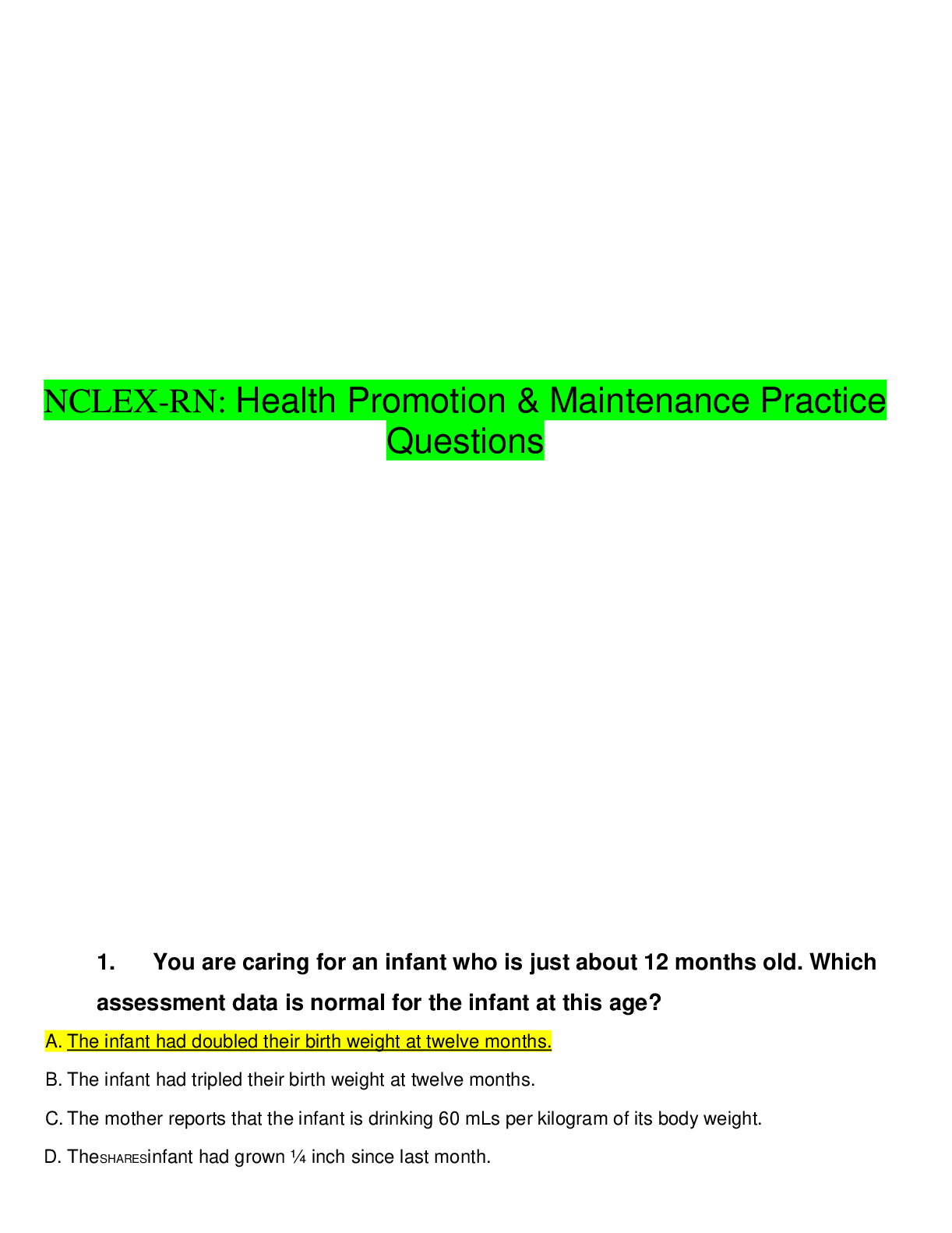
Buy this document to get the full access instantly
Instant Download Access after purchase
Buy NowInstant download
We Accept:

Reviews( 0 )
$12.00
Can't find what you want? Try our AI powered Search
Document information
Connected school, study & course
About the document
Uploaded On
Apr 12, 2020
Number of pages
14
Written in
Additional information
This document has been written for:
Uploaded
Apr 12, 2020
Downloads
0
Views
69

